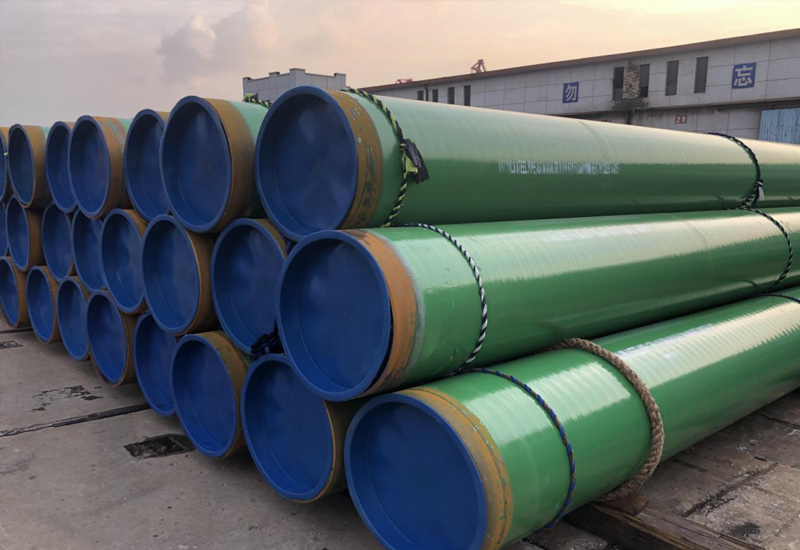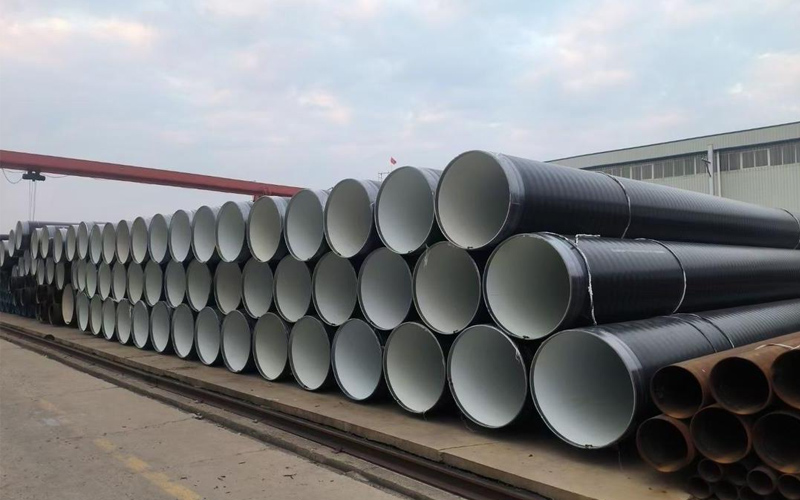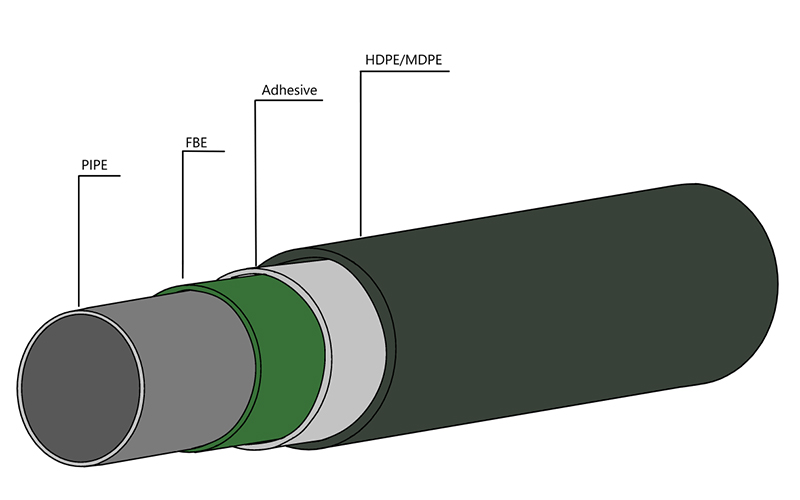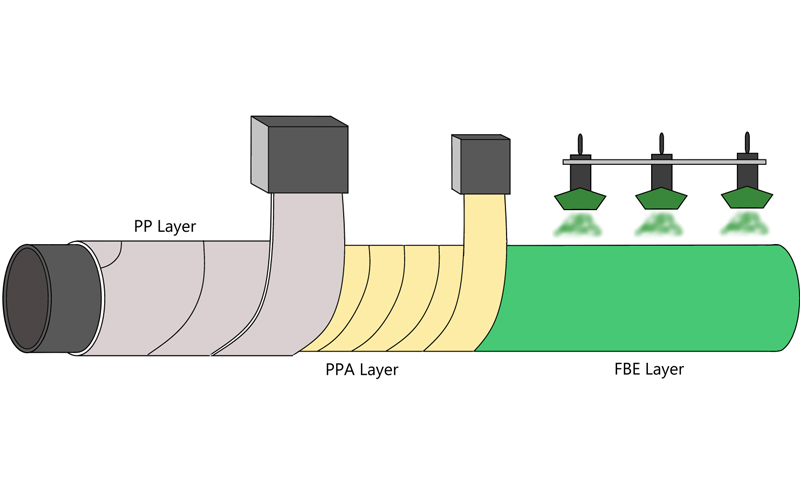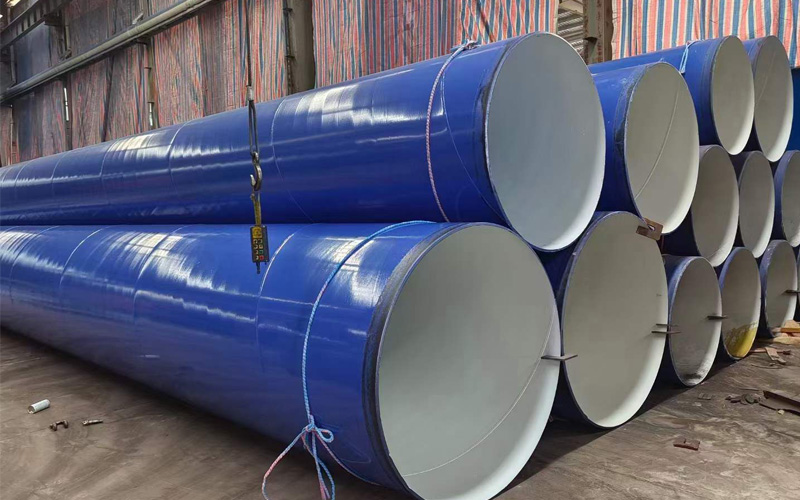Steel Pipe Sizing Errors? DN vs. OD Explained for Buyers
In fact, the actual outer diameter of a DN150 steel pipe is not 150 millimeters but approximately 168.3 millimeters (under the American standard).
Such procurement mistakes caused by confusion of basic concepts are common in the steel pipe trade. At the very least, they lead to material scrapping and project delays; at the worst, they can trigger safety accidents and result in economic losses amounting to millions of yuan.
For novice purchasers, junior engineers and international trade personnel just entering the industry, understanding the difference between “nominal diameter (DN)” and “outer diameter (OD)” in steel pipe specifications is the first lesson to avoid paying the price in their professional careers.
This article will explain the differences and connections between these two key concepts in the most straightforward and understandable way, making your procurement work more professional and reliable.
What is DN? It’s like the S/M/L size of clothes
Nominal Diameter, abbreviated as DN, is a standardized naming method used in pipeline systems to indicate the size of specifications. The simplest way to understand it is that it is a “nominal” size, rather than an actual measured size.
Imagine we go shopping for clothes:
When you say you want to buy a size “L” piece of clothing, “L” is just a size code and does not mean that the chest circumference of the garment is 100 cm or the length is 70 cm. The actual dimensions of size “L” may vary greatly among different brands and styles.
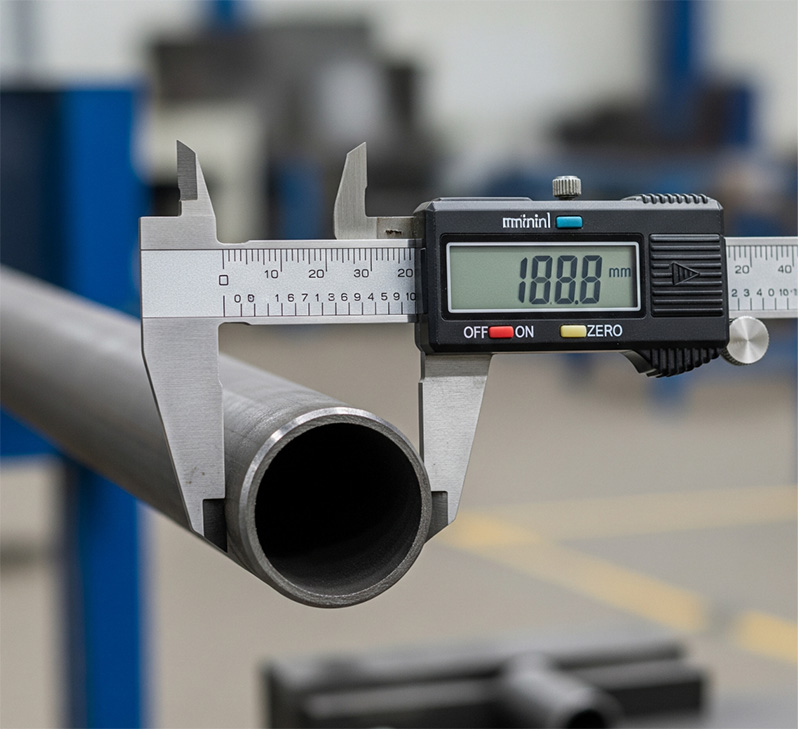
DN is the “size” of steel pipes. When we say “DN150”, it is merely a specification code, indicating that this type of steel pipe belongs to the “150” size category, but it does not mean that its actual diameter is exactly 150 millimeters.
The commonly used DN series internationally include: DN15, DN20, DN25, DN32, DN40, DN50, DN65, DN80, DN100, DN125, DN150, DN200, etc. These numbers form a standard size sequence, facilitating unified planning and selection.
What is OD? It represents the “true size” of the pipe.
Outer Diameter (OD), for short, is the actual outer wall diameter of the steel pipe that we can measure with a caliper. This is the physical dimension of the steel pipe and is an exact value.
Let’s continue with the metaphor of buying clothes:
If DN is the “size label (L size)” of a piece of clothing, then OD is the specific size data obtained by actually measuring the garment (chest circumference 108 cm, garment length 72 cm).
In engineering design and installation, OD is the most crucial data because it determines:
Can the pipes be correctly connected to the fittings (flanges, elbows, tees)?
Whether the pipes can be correctly installed on the supports and hangers.
Whether the insulation layer and the outer protective layer can perfectly wrap the pipeline.
For steel pipes of the same DN specification, due to different wall thicknesses, their outer diameters may remain the same, but the inner diameters will vary. This is why in engineering, the outer diameter is usually used as the basis for actual installation.
Why do these two sizes coexist?
Since OD is the actual size, why is there still the “nominal” size DN? This is mainly due to historical and practical considerations:
Simplifying communication: Saying “DN50” is more convenient and quicker than saying “outer diameter 60.3mm”.
Unified planning: Designers can carry out system planning and layout without knowing the specific material of the pipes.
Compatibility guarantee: Pipes and fittings of the same DN level can be matched with each other, even if they are from different manufacturers.
Pressure grade classification: The same DN may correspond to pipes with different wall thicknesses, thereby adapting to different pressure requirements.
It is important to understand that for the same standard system, the OD corresponding to the same DN value is fixed. For example, in the ASME B36.10 standard, the outer diameter of the steel pipe with DN150 (NPS 6) is always 168.3mm, regardless of its wall thickness.
Practical Guide: Common Standard System Comparison Table
There are two major steel pipe standard systems worldwide: the American standard (imperial) and the European standard (metric). Under these two systems, the correspondence between DN and OD is different, which is also the most confusing part.
The following is the most common specification comparison table in procurement:
| DN | NPS | OD(AMERICAN) | OD(EUROPEAN) |
| DN15 | NPS 1/2 | 21.3 mm | 20 mm |
| DN20 | NPS 3/4 | 26.7 mm | 26.9 mm |
| DN25 | NPS 1 | 33.4 mm | 33.7 mm |
| DN32 | NPS 1 1/4 | 42.2 mm | 42.4 mm |
| DN40 | NPS 1 1/2 | 48.3 mm | 48.3 mm |
| DN50 | NPS 2 | 60.3 mm | 60.3 mm |
| DN65 | NPS 2 1/2 | 73.0 mm | 76.1 mm |
| DN80 | NPS 3 | 88.9 mm | 88.9 mm |
| DN100 | NPS 4 | 114.3 mm | 114.3 mm |
| DN125 | NPS 5 | 141.3 mm | 139.7 mm |
| DN150 | NPS 6 | 168.3 mm | 165.1 mm |
| DN200 | NPS 8 | 219.1 mm | 216.3 mm |
Procurement Instructions:
It can be seen from the table that the American standard outer diameter of DN150 is 168.3 mm instead of 150 mm
· European and American standards differ slightly in some specifications ( e.g. DN65, DN125, DN150 )
· When purchasing, it must be clear which standard system the customer requires, otherwise, even if the DN value is the same, the actual pipeline cannot match
What is the cost of confusing DN and OD?
Conceptual confusion is not only a lack of theoretical knowledge, but also can lead to real-world economic losses and occupational risks.
1. Direct loss caused by mismatch of parts
Piping shall be connected to flanges, valves, elbows and other fittings. Purchasing only by DN and ignoring the actual OD is likely to result in:
· Misalignment of bolt holes
· The sealing surface cannot be matched
· Weld groove mismatch
2. Indirect losses due to project delay
Piping materials are often in the critical path of project construction. In case of material error:
· Needs to be re-purchased and shipped, delays of weeks or even months
· Idle costs for site workers and equipment
· May face project delay penalty
3. Potential safety hazard and quality risk
Forcibly installing mismatched pipes and fittings will result in:
· Connection is not strong enough and may leak or break
· Shortened system life
· May cause serious safety accidents in pressure pipeline system
A purchasing director who has worked for 20 years once told me: ” I once worked on a project, because the pipeline specification was wrong, many leaks occurred during the pressure test of the whole system, and the final loss exceeded 2,000,000. Since then, I have never judged pipe sizes empirically and have to look at standard drawings and detailed specifications every time. “
Five Practical Advice from a Procurement Expert
In order to avoid the misunderstanding of DN and OD, the following are practical suggestions for novice purchasers:
1. Never assume
Do not assume that the DN value is equal to the actual diameter. Every time I see DN, I have to ask reflexively: ” What is the actual outside diameter of which standard system this specification corresponds to?”
2. Detailed specifications are required
When purchasing inquiry, don’t just say ” DN100 pipe”, but clearly: ” DN100 SCH40 American standard ASME B 36.10 seamless steel pipe”. In this way, suppliers cannot use fuzzy specifications to provide mismatched products Similarly, for other applications, your request should be just as specific, such as ‘DN200 LSAW steel pipe for structural use’ or a ‘DN50 stainless steel pipe 316L for corrosive environments.’ This level of detail is essential.
3. Verification standard system
Make clear whether the customer uses American Standard ( ANSI/ASME ), European Standard ( DIN/ISO ) or other standard systems. Dimensional differences in different systems can have serious consequences.
4. Request product drawings
For critical piping, the supplier is required to provide detailed product drawings that clearly indicate key dimensions such as actual outside diameter and wall thickness. This is the best evidence to avoid disputes.
5. Small batch trial order
For new suppliers or uncertain specifications, small batch trial orders can be placed first, and large orders can be placed after actual verification of size matching.
Conclusion: Professional Purchasing, Starting with Clear Concept
In steel pipe procurement, it is a basic skill for professional purchasers to clearly understand the difference between ” nominal diameter ( DN )” and ” outer diameter ( OD )”. Remember:
· DN is a ” nominal size”, just like the S/M/L size of clothes, which is just a specification code
· OD is the ” actual dimension”, which is the exact physical dimension that must be used when the project is butted
Under different standard systems, the same DN may correspond to different OD values.
The standard system and detailed specifications must be clearly defined when purchasing, and orders cannot be placed only by DN value
Steel pipe procurement seems simple, but in fact there are hidden risks. Misunderstanding of a concept can lead to huge economic losses. If you have any questions about the specifications of steel pipes, or need to ensure that the purchased pipes are perfectly matched with the existing system, please contact our professional technical team.
We will provide you with:
· Free technical consultation and specification interpretation
·!– /wp:paragraph –>
· Precise size matching guarantees perfect pipe to fitting
· One-stop-shop solution to avoid compatibility issues caused by multiple purchases
Don’t let the confusion of basic concepts affect your purchasing decisions and professional image. Contact our team immediately to make your next steel pipe purchase professional, accurate and very sure. absolutely no mistake.
Get Your Custom Steel Pipe Quote Today!
Provide us with your project details (like application, specifications, quantity). Our experienced team will respond with a tailored solution and competitive quote within 24 business hours.
Related Articles
ASTM A53 vs. API 5L: A Guide to Selection and Application
Introduction:Technology differences determine success or failure, and selection needs to be “precise”
Steel Density Analysis: Core Differences between Mild and Medium Carbon Steels and Industrial Applications
3LPE coated steel pipe: a solid barrier in the field of industrial corrosion protection
3LPP coated pipe: anti-corrosion guard in high temperature and high pressure environment
FBE steel pipe: the technological armor of the steel defense line
HOT TAGS
latest posts
- Steel Density Analysis: Core Differences between Mild and Medium Carbon Steels and Industrial Applications
- Carbon Steel Floating Pipeline Systems: Innovative Applications of LSAW/SSAW Steel Pipes in Marine Engineering
- LSAW Steel Pipe: UOE vs JCOE Process | Allland steel pipe
- Onshore Pipeline: A Complete Selection Guide
- 3PE Pipe Coatings: A Guide to Protection, Standards&Applications




